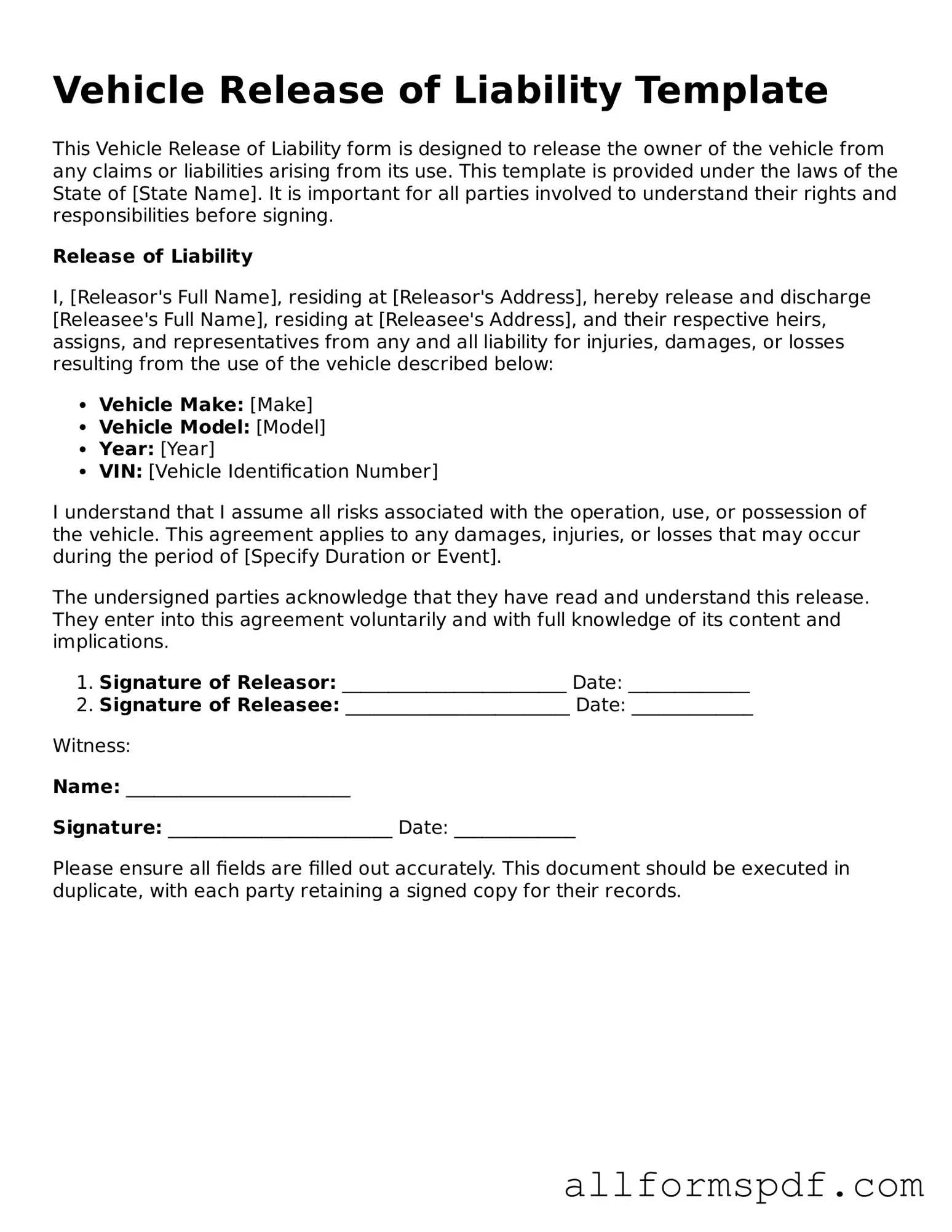Completing a Vehicle Release of Liability form is a crucial step in transferring ownership of a vehicle. However, many individuals make common mistakes that can lead to complications later on. Understanding these pitfalls can help ensure a smoother process.
One frequent error occurs when individuals fail to provide accurate vehicle information. This includes the Vehicle Identification Number (VIN), make, model, and year. If any of this information is incorrect or incomplete, it may result in delays or disputes regarding ownership.
Another mistake involves neglecting to sign and date the form. A signature is essential for validating the document. Without it, the form may not be considered legally binding. Additionally, the date serves as a record of when the liability was released, which can be important for future reference.
People often overlook the necessity of providing the correct information for both the seller and the buyer. Missing or incorrect names, addresses, or contact information can create confusion and hinder communication. This can lead to issues if either party needs to be contacted regarding the vehicle in the future.
Furthermore, many individuals do not keep a copy of the completed form for their records. Retaining a copy is important for both parties involved. It serves as proof that the liability was released and can protect against any potential claims that may arise after the transfer.
Lastly, failing to check local regulations can result in further complications. Different states may have varying requirements for the release of liability. It is essential to verify that the form complies with local laws to avoid any legal issues down the line.
